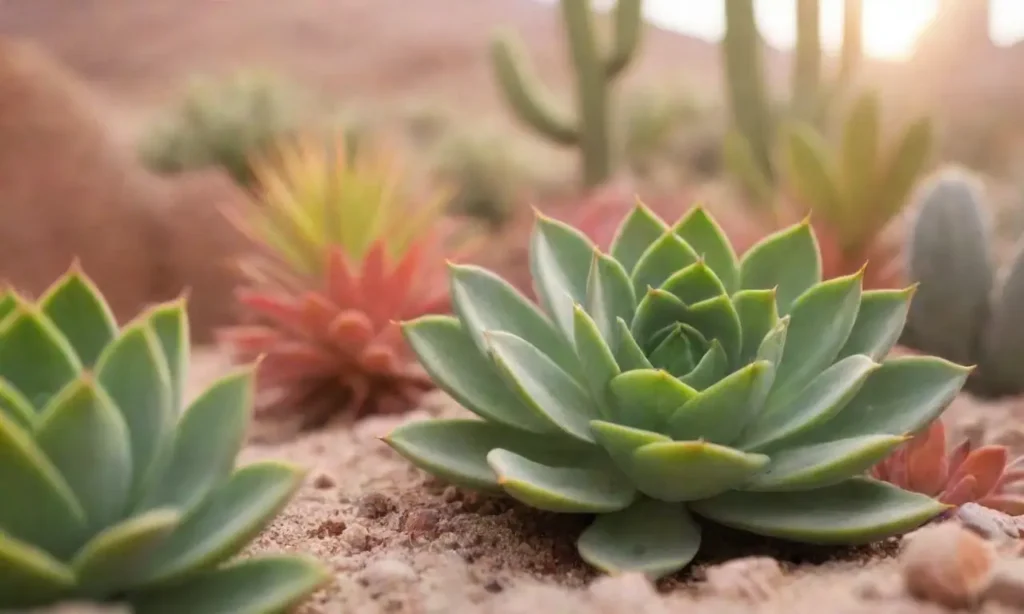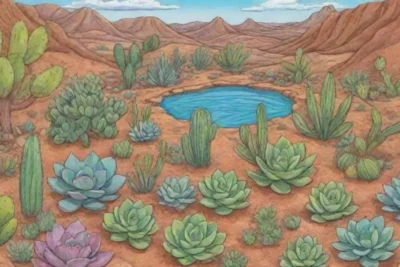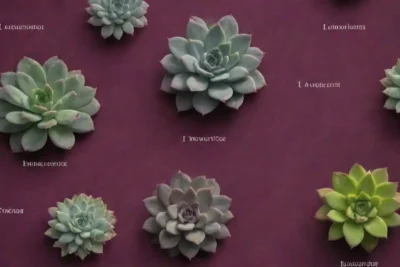
Understanding CAM Photosynthesis in Desert Succulents

Introduction
Photosynthesis is an essential process by which plants convert light energy into chemical energy, producing glucose and oxygen as byproducts. While the conventional C3 and C4 photosynthetic pathways are widely discussed, another fascinating pathway known as Crassulacean Acid Metabolism (CAM) is particularly significant in desert environments. CAM adaptations allow certain succulents to thrive in arid conditions by maximizing water efficiency. This article will delve into the intricacies of CAM photosynthesis, focusing on its mechanisms, advantages, and examples found in desert succulents.
In the following sections, we will explore the biochemical processes underlying CAM photosynthesis, how it distinguishes itself from other photosynthetic pathways, and its ecological significance in desert habitats. By understanding CAM and its role in the survival of desert succulents, we gain insights into the adaptive strategies of plants facing extreme environments.
The Basics of CAM Photosynthesis
CAM photosynthesis is a unique adaptation observed in certain succulent plants, particularly those native to deserts and semi-arid regions. The primary mechanism of CAM involves the stomatal opening at night instead of during the day, which is a crucial development to minimize moisture loss. In contrast to C3 and C4 plants, which have their stomata open during the day to facilitate gas exchange, CAM plants take advantage of the cooler nighttime temperatures to absorb carbon dioxide (CO₂) without losing excessive water through transpiration.
When the stomata are open at night, CO₂ is captured and converted into malate, which is stored in vacuoles as malic acid. During the day, when the stomata close to conserve water, malate is decarboxylated to release CO₂ for the Calvin cycle, allowing photosynthesis to proceed even under stressed conditions. This nocturnal gas exchange allows CAM plants to perform photosynthesis with much lower water loss compared to daytime strategies, making it an essential feature for survival in harsh climates.
The Biochemical Mechanism of CAM
At the core of CAM photosynthesis lies a complex biochemical pathway that involves various enzymes. The primary enzyme in the initial fixation of carbon dioxide at night is phosphoenolpyruvate carboxylase (PEPC), which catalyzes the conversion of phosphoenolpyruvate (PEP) and CO₂ into oxaloacetate (OAA). This OAA is further converted into malate, which is stored for use during the day.
When the duration of daylight arrives, CAM plants use the enzyme malic enzyme to convert the stored malate back into CO₂ and PEP. The release of CO₂ during daylight allows these plants to engage in the Calvin cycle, which isn't feasible without the daytime availability of sunlight for ATP and NADPH generation. This mechanism ensures that CAM plants efficiently utilize available carbon resources while limiting water loss through transpiration.
CAM Variants
While traditional CAM photosynthesis operates predominantly through nocturnal CO₂ fixation, variations within the CAM pathway can lead to distinct adaptations. Two notable variants are CAM idling and CAM cycling.
 Succulent Flowers: Pollinator Adaptations in Arid Regions
Succulent Flowers: Pollinator Adaptations in Arid RegionsCAM Idling: This occurs when a CAM plant experiences prolonged water stress. In this state, the plant may continue to fix CO₂ at night but directly utilizes the carbon for respiration. The stomata may remain closed during both night and day, conserving water but limiting photosynthesis.
CAM Cycling: Some plants exhibit a more flexible approach by alternating between CAM and C3 pathways based on environmental conditions. This adaptability allows them to benefit from available CO₂ when water is sufficient while switching to CAM when faced with drought.
These variants underline the remarkable adaptability of CAM photosynthesis in response to fluctuating environmental conditions.
Advantages of CAM Photosynthesis
One of the primary advantages of CAM photosynthesis is its water-use efficiency. By absorbing CO₂ mainly at night, CAM plants significantly reduce the quantity of water lost through transpiration. This is especially vital in desert regions, where moisture is scarce. Studies have shown that CAM plants can photosynthesize while losing as little as one-tenth of the water that C3 plants would lose under similar conditions.
Additionally, the ability to thrive in extreme conditions offers a competitive edge against other photosynthetic pathways. CAM plants can occupy ecological niches where water availability fluctuates vastly, making them pioneers in dry climates. This adaptation can lead to higher survival rates for CAM succulents and allow them to seize opportunities in recently disturbed habitats.
Furthermore, CAM photplants are advantageous from an ecological perspective. The nocturnal gas exchange process not only aids the plants' growth but also plays a role in the local ecosystem dynamics. The accumulation of organic matter during nighttime photosynthesis contributes to soil quality and the overall health of the surrounding microhabitats.
Examples of Desert Succulents Utilizing CAM

 How Succulents Use Thorns and Spines for Survival in Biomes
How Succulents Use Thorns and Spines for Survival in BiomesNumerous succulents exhibit CAM photosynthesis, displaying a variety of morphological and physiological adaptations. One iconic example is the Agave genus, known for its rosette-shaped leaves and sharp spines. Agave species, like the Agave americana, thrive in arid zones and possess thick, fleshy leaves that store water, allowing the plant to survive long periods without rain.
Another interesting example is the Echinocactus, often referred to as fishhook cacti. These cacti utilize CAM photosynthesis and adapt their structure to minimize water loss through surface area changes. The rounded shape and specialized structures like spines effectively reduce transpiration, providing this cactus with an adaptive advantage in harsh environments.
Opuntia, or prickly pear cacti, is yet another genus utilizing CAM. With their flat, paddle-like pads, these succulents can store water and perform photosynthesis efficiently in the desert landscape. Their adaptation includes the ability to form a protective mucilaginous coating around the stomata, thus preventing moisture loss.
These examples illustrate just a few of the diverse species employing CAM to navigate their unique environments successfully.
Conclusion
In summary, Crassulacean Acid Metabolism (CAM) photosynthesis represents an extraordinary adaptation mechanism that allows desert succulents to thrive despite limited water resources. By closing their stomata during the day and employing nocturnal CO₂ fixation, CAM plants can maximize water-use efficiency and compete in arid environments where other plants might fail.
Understanding CAM photosynthesis not only enhances our appreciation for these remarkable plants but also emphasizes their role within ecosystems. With climate change challenging traditional habitats, studying CAM plants will be crucial for conservation biology and sustaining biodiversity in increasingly stressed environments.
As we recognize the inherent importance of CAM photosynthesis in desert succulents, it invites further exploration into plant adaptations. Researchers are continually seeking to unlock the secrets behind these versatile plants, possibly leading to innovations in agricultural practices and enhanced crop resilience in the face of a changing climate. The world of photosynthesis is vast, and the intriguing adaptations of CAM plants serve as a reminder of the remarkable strategies life unfolds to endure and thrive amidst the challenges of nature.
 The Evolutionary History of Succulents in Extreme Biomes
The Evolutionary History of Succulents in Extreme BiomesIf you want to read more articles similar to Understanding CAM Photosynthesis in Desert Succulents, you can visit the Biome Adaptations category.






You Must Read